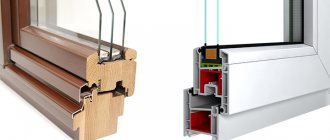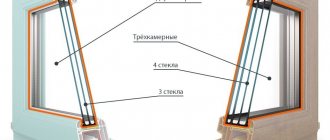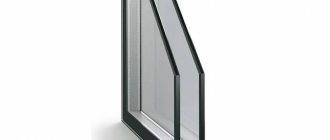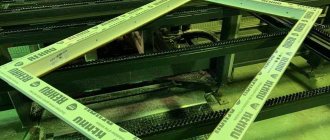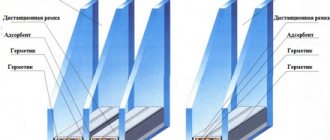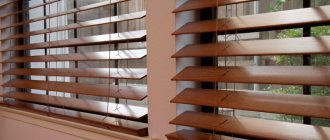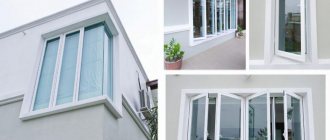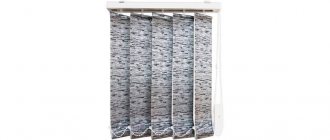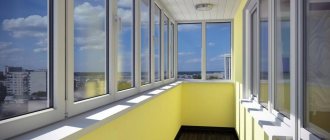Modern technologies improve people's comfort. Therefore, the question of which plastic windows is better to choose is more relevant today than ever.
It is due to compliance with the technical characteristics of the product that warmth in the house is ensured. Knowing them, you can avoid deception on the part of manufacturers and installers. More details about the features of independent choice of designs will be discussed below.
Types of plastic windows: their classification
Choosing a plastic window is an investment in your comfort for decades to come. The article contains the main technical types and requirements for plastic windows. This is basic knowledge that helps not only buyers make the right choice of window type, but also expands the competence of salespeople in window companies. The topic is large and extensive; the article contains the main types of plastic windows for the climatic conditions of Russia.
Types of plastic windows by:
- Types according to functionality: windows differ in the level of heat conservation, protection from noise, from the sun, and level of light transmission.
- Types by design: Windows come in various shapes and sizes.
- Types by type of opening: solid and opening with a different number of doors and types of opening.
- Types according to safety level: burglary-proof, child-proof and damage-proof.
- Types of decor: windows differ in the types of decoration of the profile, glass unit and fittings.
Types of plastic windows
Types of plastic windows depending on various factors: © oknamedia
Destination
Gazebo with plastic windows Source st44.stpulscen.ru
The concept of “heat and cold” among window makers means a model that should have good thermal insulation properties and separate the street (with its negative temperatures) from the living space. In the understanding of most of us, plastic windows are installed precisely according to the latter scheme. The fact that they can be used indoors is something we often overlook. For example, a window in the boss’s office in an office, a factory workshop, or a summer gazebo.
Such models are called “cold-cold” or “heat-heat”, because they are installed in places where there is no sharp temperature difference on different sides of the glass unit. The design of such models is the most simplified, which is reflected in the low price.
Types of plastic windows depending on functionality
Types of energy-saving windows
The level of heat saving is especially important for suburban real estate. It is assessed by the window's heat transfer resistance coefficient. Shows what temperature difference should be between the inside and outside of the window so that after 1 sq.m. 1 W of heat passed. The higher this coefficient, the more heat the enclosing structure retains. For the type of heat-saving windows, the heat transfer resistance coefficient must be at least 1m2•°C/W.
Photo: the higher the heat transfer resistance coefficient, the warmer the house will be. © oknamedia
Components of the type of energy-saving windows:
- profile from 76 mm wide / from 5 air chambers inside,
- One, and preferably two, energy-saving glasses in a double-glazed unit (I-glass, multifunctional glass),
- warm spacer frame (made of plastic or a combination of plastic and metal),
- inert gas (argon, krypton) inside the glass unit,
- EPDM or silicone seal,
- accessories made in Europe,
- 3-layer assembly seam according to GOST.
Types of sun-protection windows
The level of sun protection is assessed by the “solar factor” indicator. It indicates how much solar heat enters the room (% of the total). The lower the indicator, the less the air inside heats up. For residential premises, the comfortable solar factor is in the range of 30-50%. A double-glazed window with this indicator reduces the heating of the room by 3-5°C. The air conditioner can be turned on for a shorter time or not turned on at all. For comparison, a 2-chamber double-glazed window with ordinary glass without sun protection has a solar factor = 72%.
Components of solar control windows:
The main element of such windows is a double-glazed window with solar control glass. It is preferable to choose multifunctional glass. It performs 2 functions at once - heat conservation and sun protection.
| Attention! Solar control glass should not be installed in windows on the north side of the building and in the shade of awnings, canopies and trees - it will shade the room. |
Types of soundproofing windows
A regular 2-chamber double-glazed window reduces noise by 29-30 dBA. For noise protection purposes this is not enough. GOST 23166-2021 “Window blocks” requires a reduction of at least 36 dBA. If there are sources of increased noise nearby, then it is necessary to install a special soundproof window.
Installation location: apartments located near major highways and railways, train stations, airports, active construction sites; country houses in densely populated villages.
The main purpose of types of soundproofing windows is to reduce the level of noise that enters the room.
We talked more about window sound insulation in the article “How to increase window sound insulation?”
Complete set of types of noise-proof windows:
- The main role in noise protection is given to double-glazed windows. To increase the sound insulation of windows, use thicker outer glass of at least 6 mm (+2-3 dBA) or triplex (+3-5 dBA), acoustic triplex (+5-8 dBA).
- wide profile from 70mm;
- high-quality installation using special tapes to close all possible cracks,
- ventilation devices (ventilation valves, wall-mounted ventilators with noise-absorbing inserts).
Types of windows based on glass light transmission
This indicator is important for types of constantly shaded windows.
Place of installation of types of windows with increased light transmission: 1-3 floors in courtyards with dense vegetation; windows under awnings, canopies; balcony blocks with a glazed balcony; windows on the north side of the building.
The purpose of this type of window: maximum possible light transmission to maintain the level of natural light in the room.
Components of windows with increased light transmission:
- minimum number of lintels (imposts) in windows,
- coated glass (without a greenish or bluish tint) – light transmission is 15-20% higher than conventional energy-saving glass. When making glass, iron oxides are removed, thereby making it more transparent and neutral.
How windows differ by type of double glazing
Glazing of plastic windows is carried out using complex structures of two, three or four sheets of glass, fixed at a given distance from each other. The outer part is sealed. The resulting cavities inside, between the glasses, are called chambers.
Double-glazed windows installed on plastic windows can be:
- single-chamber
- two-chamber
- three-chamber
Therefore, having learned that the window has two or three chambers, it is necessary to clarify which chambers are meant - in frames or double-glazed windows.
Single-chamber double-glazed windows
The thickness of a single-chamber glass unit (two sheets of glass and a cavity between them) is in the range of 14 – 32 mm. The space between the glasses along the perimeter is covered with a metal strip that separates the glasses and holds them at a given distance - a spacer frame. The section shows that the frame is not a strip at all, but a “U”-shaped profile, with the open side directed towards the inside of the frame.
Small diameter holes are made in the lower part of the frame, connecting the chamber and a special sealed volume inside the frame, in which a moisture absorber is poured. As a result of the action of the absorbent, moisture from the chamber is almost completely removed and the window does not fog up at any outside temperature.
But single-chamber packages are considered obsolete. They are installed on not very important windows in unheated rooms, on balconies, loggias, in shops, industrial premises, etc. In residential buildings, more complex structures are used - two-chamber ones (three sheets of glass and two cavities between them).
They are somewhat heavier than single-chamber ones, but in terms of heat and sound insulation efficiency they are almost twice as effective. At the same time, the light transmittance of both structures is approximately the same.
Double-glazed windows
When using glass 4 mm thick, the total installation depth of a two-chamber package ranges from 30 to 58 mm. Manufacturers often fill chambers with argon, xenon or other inert gas, but this is only justified when using energy-saving i-glasses with sputtering.
If they are trying to sell you bags made of ordinary glass filled with inert gas at a higher price, do not fall for advertising tricks. At best you will get a 1-2% reduction in thermal conductivity. When using I-glasses, the difference can reach 10–15% of the total heat-saving effect. This is already a pretty decent figure.
Compared to ordinary glass, double-glazed windows reduce the level of street noise several times. In absolute value this is more than 45 dB. Moreover, the cost of such a package is not much higher than a single-chamber one.
Three-chamber double-glazed windows
It is not advisable to buy windows with three-chamber packages; they are heavier compared to two-chamber ones, and the level of heat saving and noise insulation increases slightly due to the decreasing width of the spacer frames.
Special features of double-glazed windows
The properties of a double-glazed window largely depend on the properties of the glass. Leading manufacturers are constantly experimenting with glass, as a result of which you can buy windows with double-glazed windows:
Heat-saving . A metallized film, invisible to the eye, is sprayed onto the glass and reflects the thermal part of the spectrum, simultaneously transmitting all visible rays. Glass has excellent transparency and does not distort colors, but does not allow heat to penetrate inside in the summer, and in winter the heat does not leave the room in the form of infrared radiation.
Tinted . As a rule, glass is colored at the production stage by adding metal oxides or other chemical compounds to the mixture. As a result, the window, while maintaining transparency, takes on a very attractive, sometimes exotic appearance.
Shockproof . Instead of regular float glass, tempered or triplex glass is used. They do not differ in transparency, but are much stronger. Most often they are installed at production facilities, educational institutions, and stores. It is convenient to install such windows on the lower floors, protecting the glass unit from an accidental impact or a deliberate act of vandalism. Such glasses are completely safe; even if they break, they crumble into rectangular pieces that are unable to cause injury, or remain glued to a durable polymer film.
Noise-proof . As a rule, they use several technological techniques. In addition to sputtering thin films, the chambers are filled with inert gases, and the thickness of the remote chambers is made different. As a result, sound vibrations are actively damped, reflecting from intermediate surfaces. Compared to a conventional two-chamber window, a sound-proof double-glazed window reduces the level of external noise by 20% more.
Mirrored . Such glass is produced in two ways - by sputtering a metallized or polymer film onto the surface, or by adding metal oxides to the glass mass during manufacturing. In the second case, the color is extremely stable, and the amount of light entering the room is minimally reduced. The appearance of mirror glass is very interesting; you can choose different shades, from gold and silver to emerald, bluish or pearl.
Types of plastic windows depending on the design
The shape and size of windows influence the properties of the window. All types of windows can be divided into standard and non-standard.
Types of non-standard shaped windows are installed in private homes. They have many restrictions on the possibilities of installing the sashes and opening them. For example, round types of windows with a round sash can be made with a diameter of 1500 mm*, and a trapezoidal sash can be with an angle of at least 60°* (*averaged data, may differ from one manufacturer to another).
| Attention! Before designing your home, check with your window company to see if the custom window you need can be made. This will avoid an unpleasant surprise when the opening is ready, but it is technically impossible to make a window into it. |
It is important to know the minimum and maximum sizes and shapes of windows with a guarantee:
- Minimum size of a window with a sash under warranty (for technical rooms, bathrooms, basements, attics). Approximately 350x450 mm.
- The maximum window sizes according to GOST that do not require strength calculations are 6 sq.m. for white, and 5 sq.m. for colored ones. But each manufacturer sets its own limits depending on the color of the profile and the thickness of the reinforcement.
- Minimum and maximum radius of the arched element, the ability to manufacture arches with several radii (for example, oval). Approximately – 250-4500 mm.
- Minimum opening angle of trapezoidal/triangular sash (approximately 60°).
Non-standard shaped sashes have limited opening capabilities. Most often they are only rotary. They simply cannot be made to turn and tilt.
Rectangular windows are more in demand because they are suitable for any type of property. They can implement any type of opening of the valves from the listed ones.
Types of plastic windows with and without lintels
The window is divided into parts using lintels. There are types with and without jumpers (panoramic).
Photo: lintels in the window impair the panoramic view. © depositphotos.com
Types of jumpers in the window:
- An impost is a fixed lintel fixed in a frame. It is visible when the doors are opened. A classic, familiar option to everyone.
- Shtulp - a movable jumper fixed to the sash. When the sash is opened, the opening remains completely free. Often such windows or doors are made on the first floors of country houses to make it easier to drag in furniture or as an inexpensive alternative to expensive panoramic windows when open. You can install such windows in apartments with access to the balcony (French windows). The article “ French window instead of a balcony block - what to consider when purchasing ” reveals in detail the features of these types of windows.
- Connector - special profiles that are used to connect two or more windows at an angle or in one line.
- When dividing a window, you have to take into account many factors that greatly influence the price. Read more in the article “ How to divide a plastic window into parts?” "
The fewer jumpers, the more beautiful the panorama from the window. Modern profile capabilities allow you to make large windows without dividing the opening into 2 parts: white up to 6 sq.m. with side length up to 4 m, colored up to 5 sq.m. and side length up to 2.5 m
The price of a window, depending on the division into parts, can vary within ±15%. We recommend asking the window company for estimates of several options for comparison.
About mosquito nets
What types of PVC windows with mosquito nets there are, we will consider further. When ordering designs, you need to remember about high-quality mosquito nets. They are designed to protect the room from insects, leaves, and poplar fluff. The mesh can be easily removed, washed, and is made of fiberglass (fiberglass sealed in polymer). The element is fixed using a rubber cord in an aluminum frame connected by plastic corners.
The mosquito net is attached from the street side to special devices; its dimensions are selected individually for each opening. These products are also placed on the doors of balconies; they are fixed on the frame with side hinges and a magnetic latch. After 3-4 years, the nets sag and require replacement. This feature is due to insufficient rigidity between the aluminum frame and plastic corners.
Types of plastic windows by type of opening
Types of windows with different numbers of sashes
According to GOST requirements, all sashes must open, with the exception of windows on the first floors and those opening onto the balcony. Each sash adds at least 1,500 rubles to the cost of the window. Opening is not necessary for the manufacturer to earn more, but for comfort and safety.
Purpose of opening the doors: ventilation of the room, safe washing.
Depending on the number of sashes, there are 1-, 2-, 3-leaf types of windows. There may be more doors.
Photo: standard windows with one, two and three sashes. © oknamedia
Types of windows with different types of opening sashes
There are many options for opening the doors, from the usual manual to the exclusive automatic.
Types of manual opening:
- The rotating type is a replacement for blind doors (non-opening) to make it convenient and safe to wash.
- Tilt-and-turn type - convenient and safe summer and winter ventilation, replaces vents.
- Tilt First tilt-and-turn type – for windows in children's rooms and properties where there are children. Convenient, reliable and the most advanced type of child safety, hidden inside.
Photo: Tilt First is the most convenient way to protect children. © Roto
- Transom view - tilt only position, transom sashes are usually located at the top of the window. Modern fittings allow you not only to tilt the transom sash, but also to swing it open 90 degrees, which makes servicing and cleaning the window convenient.
Photo: transom. © depositphotos.com
- Sliding view – convenient, ergonomic, reliable opening for windows and doors of the latest generation.
Photo: sliding door with Roto Inova fittings. © Roto
- Folding view - in accordion windows and doors, you can completely open the opening by sliding the sashes to one side
Photo: accordion door. © Roto
- Automatic opening - replaces manual opening, for connoisseurs of comfort and innovation. Possible in tilt-and-turn, transom and sliding openings.
Photo: types of plastic windows by opening. © oknamedia
Let's look at the types of opening using the example of the product line of the leading hardware manufacturer Roto Frank*. The range includes three models of standard fittings with different capabilities in size, weight and types of opening, sliding and automatic opening.
Types of plastic windows by opening type
| Window type | Roto fitting model | Maximum sash dimensions | Installation location | |||
| Width, mm | Height, mm | Weight, kg | ||||
| Standard windows (pivot, turn/tilt) | OK | 1300 | 2400 | 80 | Tender objects | |
| NT | 1600 | 2400 | 130 | Any object | ||
| NX | 1600 | 2800 | 150 | Any object | ||
| TiltFirst Tilt-Turn Children's Windows | NT | 1600 | 2400 | 130 | According to GOST requirements - everywhere | |
| NX | 1600 | 2800 | 150 | |||
| Folding transoms | OK | 1300 | 800 | 50 | Windows in the basement, attic, office buildings | |
| NT, NX | 2400 | 1200 | 80 | |||
| Casement windows and doors with pivoting and tilt-and-turn opening | OK | 1300 | 2400 | 80 | Exit to balcony, terrace, Balcony glazing | |
| NT | 1600 | 2400 | 130 | |||
| NX | 1600 | 2800 | 150 | |||
| Anti-theft windows with tilt and turn opening | NT | 1400 | 2400 | 130 | 1st and last floors, cottages, dachas | |
| NX | 1600 | 2800 | 150 | |||
| Windows with handle at the bottom with tilt and turn opening | NT, NX | 1400 | 1600 | 50 | House, apartment if there is a person with limited mobility in the family | |
| Arched windows with pivot or tilt-and-turn opening | NT, NX | 1300 | 1900 | 80 | Country houses, dachas | |
| Trapezoidal windows with pivot or tilt-and-turn opening | NT, NX | 1300 | 2400 | 80 | ||
| Automatic tilt and turn windows | NT, NX + E-Tec Drive | 1400 | 2200 | 100 | Everywhere | |
| Folding accordion doors | Patio Fold | 900 | 2800 | 100 | Exit from the house to a balcony, terrace, glazing of verandas and terraces, gazebos | |
| Lift and slide doors | Patio Lift/Life | 3000/3235 | 3000/2670 | 400 | ||
| Parallel sliding doors | Patio Alversa | 2000 | 2700 | 200 | ||
| Parallel sliding doors | Patio Inowa | 2000 | 2500 | 200 | ||
It is not necessary to make the same opening types of windows throughout the entire house or apartment. Each room needs to choose its own type of door opening that suits the needs of its occupants.
Certification.
The production and installation of plastic windows must be certified. First of all, check with the sellers for the availability of the DIN EN ISO 9001 certificate. This is a quality control system designed to ensure the stability of the properties of the products at a given level, as well as continuous improvement of the product. Therefore, all consumers, whether individuals or large companies, need to pay close attention to its availability from the manufacturer. The RAL certificate states that the declared product meets certain physical and mechanical properties, and the DIN EN ISO 9001 certificate states that the stability of these properties is controlled during the production process.
Types of plastic windows depending on the level of security
Windows must ensure the integrity of the house (burglar-resistant) and at the same time be safe for all household members, especially for children (children's windows).
Installation location for anti-burglary windows: city apartments on the 1st and top floors; windows where there is access from neighboring balconies, common staircases, canopies; country houses and dachas, shops, offices, hotels.
Components of anti-burglary windows:
- profile from 70 mm wide,
- reinforcement 2 mm thick to give rigidity to the window,
- glued (glued to the profile) double glazing with triplex from the street side,
- anti-burglary fittings and protection against drilling of the handle,
- sensors for broken glass and door opening.
Windows pose a threat to the life and health of children. Sashes that open easily and unsecured glass lead to thousands of tragedies every year.
Place of installation of children's windows: apartments, 2nd and higher floors of country houses, schools, hospitals, child care institutions, hotels.
Components of children's windows:
- TiltFirst children's hardware with tilt-and-turn opening and locking handle or any child lock;
- anti-vandal film on internal glass or triplex.
The need for child locks on windows is established by law.
Components of damage-safe windows to choose from:
- Tempered glass is 6 times stronger than regular float glass. It has increased safety in case of damage. Glass fragments turn into fine sand, which will not harm human health.
- Triplex is laminated glass with a special film inside. This glass has increased strength (6 times stronger than regular glass) and sound insulation. The advantage of triplex over tempered glass is the absence of a hole in the window during the manufacture and replacement of a double-glazed window. When damaged, glass shards hang on the film.
- Anti-vandal film on internal glass is a more affordable alternative to triplex, but with a shorter service life.
You can save on the beauty of windows, but not on the safety of your children and health.
Design Features
The design of plastic windows is a profile made of a polymer based on chloride and ethylene - this polymer is called polyvinyl chloride. The ingredients, which are in powder form, are heated, pressed, and then the white frames of future windows are formed. Also, the substance from which the profile is made is supplied with stabilizers, plasticizers and modifiers. A metal profile is inserted into the window system, then the component parts are soldered using thermal soldering.
If a colored frame is required, a special pigment is added to the material for plastic windows at the stage of producing the profile.
To select a suitable design, it is worth considering the number of chambers in the profile (a chamber is the space formed between two plastic jumpers, which are located along the entire profile):
- three-chamber. The system is installed where the room does not need heating.
- five-chamber. Ideal for our country.
- six-, seven-chamber. Such systems are commercially available, but we do not recommend installing them, since the thermal conductivity effect will be comparable to a five-chamber system.
Types of plastic windows by design
Window design is a new trend. Homeowners are replacing perfectly functional windows with new ones to match their decor. You can decorate the window with the profile, glass unit and fittings.
Place of installation of fashionable types of windows: country real estate, city apartments, taking into account the correspondence of the appearance from the outside to the facade of the house, other objects at the request of the buyer.
Ways to decorate the profile:
- Painting – use water-based acrylic paints. There are more than a thousand colors in the assortment. You can paint the window on one or both sides. The service life of the coating is 15-20 years. A less common method in the window market.
- Lamination - the profile is covered with a film that imitates wood, metal, stone, leather, fabric. Lamination can be combined with painting, done only inside, only outside or on both sides of the window. The service life of the coating is from 15 years.
Photo: colored windows decorate the house. © oknamedia
- Painting and lamination of the profile is carried out in production.
| Important! Installed plastic windows cannot be painted or laminated from the outside. Only from the inside! For colored plastic windows, thicker reinforcement of 2 mm or more is required to avoid deflections and deformations of the profile. |
The price of the coatings is approximately the same - plus 15-20% to the cost of a turnkey white window.
| Important! There are special requirements for windows with decorated profiles - the thickness of the reinforcement is at least 2 mm so that the window does not deform when heated in the sun. |
You can color a plastic window not only on the inside and outside, but also on the inside (this part of the profile is visible when opened). To do this, use a profile painted in the mass and only for colored windows with 2-sided lamination.
Manufacturers offer standard mass-dyed profiles: caramel, chocolate and fashionable gray. When the sash on a window made of a colored profile is open, it looks more elegant and harmonious.
Photo: on the left – 1-sided lamination, on the right – profile painted in the mass and 2-sided lamination. © oknamedia
The production time for painted or laminated windows is always 7-14 days longer than for white ones, and the cost is 30-35% higher.
Types of decoration of double-glazed windows:
- Decorative films with patterns or imitation of frosted glass. Glued to inner or middle glass. Cannot be glued to coated glass (multifunctional, I-glass).
- Decorative layout - aluminum profiles from which grilles of various shapes are assembled. Installed in the inner chamber of a double-glazed window. Not recommended for spacers with a thickness of less than 14 mm, because may lead to cracks in the glass unit.
Photo: the layout is suitable for classic interiors. © depositphotos.com
- Overlay frames (false binding) - a pattern made of a plastic or wooden profile (depending on the window material), glued to the double-glazed window.
Photo: false binding imitates lintels in a window. © depositphotos.com
- Stained glass and its imitation is a design that is assembled from pieces of colored glass or film. Real stained glass is expensive and rare.
Photo: Stained glass - home decoration. © oknamedia
- Frosting of glass - sandblasting or chemical etching. The result is matte patterns on the glass. Can be combined with other types of decor.
Any decoration on glass leads to a decrease in light transmission. This must be taken into account when decorating a children's room, where the level of illumination is important for the health of the child's eyes.
Types of plastic windows depending on the decoration of the fittings
The main decorative effect belongs to the window handle as the most noticeable element of the fittings.
- The handle is chosen to match the color of the profile or, conversely, a contrasting one. The shape and color of the handle can be chosen to match the handles on furniture or interior doors.
Photo: there is a large assortment of pens, there is plenty to choose from. ©roto
- It is better to hide the hinges so that they do not distract attention and do not introduce unnecessary “visual noise” into the interior. Roto Designo hidden hinges are the ideal solution for beautiful windows; they do not leak and can withstand greater sash weight.
Photo: hidden hinges decorate the window. © oknamedia
- For super-fashionable anthracite-colored windows, Roto offers a new product – black fittings Roto Black Edition.
Photo: Complete with a gray body-painted profile, the Roto Black Edition looks very stylish. © Roto
Which ones are better to choose for a house or apartment?
It is important to know how to choose plastic windows correctly, for which, when searching for the best design, use the recommendations for checking indicators:
- country of origin of the profile - in this case, sellers talk about German production, but all products are manufactured in Russia using German technology using cheap materials;
- number of chambers - as already described above, it is not recommended to choose more than 5 chambers, since the increase in thermal conductivity will not occur, and you will have to pay more, and the structure will be larger;
- profile width - the wider the better, especially for residential premises;
- the number of double-glazed windows is optimal for a house and apartment and it is recommended to use two-chamber structures;
- reinforcing steel insert - it is recommended to choose an open circuit, as it gives the best performance;
- ISO 9001 certificate - its presence indicates the strength and quality of the structure.
It is impossible to determine exactly which plastic windows are of the highest quality without studying the technical characteristics and reviews.
Types of plastic windows - let's look at an example
Before looking for a manufacturing company, choose the type of windows that suits you.
Example:
A young family wants to replace the windows for a new 2-room apartment on the 7th floor. A window to the kitchen, children's room and balcony block is required. The windows face the sunny side.
Complete sets of different types of windows:
Profile in all windows 70 mm/5 chambers
- Window for the kitchen on the sunny side of the house: 2-leaf, both sashes are tilt-and-turn, handles in Titanium color. The color of the profile on the outside is white (as in the whole house), the color on the inside is mountain oak to match the color of the kitchen furniture. The double-glazed window is 2-chamber, with 6mm multifunctional glass on the outside.
- Window in the children's room: double-hung, all sashes are tilt-and-turn with TiltFirst fittings, TiltFirst children's handles with a white key. The color of the profile outside and inside is white. The double-glazed window is 2-chamber, on the outside there is 6mm multifunctional glass, on the inside there is anti-vandal film of class A3.
- Balcony block (opens onto a glazed balcony): The profile color is white on the outside, the color on the inside is anthracite. The window is blind, without lintels. The door is tilt and turn with a double-sided black handle and hidden hinges. Double-glazed unit made of coated glass, inside there is I-glass on a coated base, all glass is 4 mm.
Total light transmittance
Based on the overall light transmittance, windows are divided into classes:
Specification table
| Class | Total light transmittance |
| A | 0.50 or more |
| B | 0,45 — 0,49 |
| IN | 0,40 — 0,44 |
| G | 0,35 — 0,39 |
| D | 0,30 — 0,34 |
Specification table Class Total light transmittance A 0.50 or more B 0.45 - 0.49 V 0.40 - 0.44 D 0.35 - 0.39 D 0.30 - 0.34 | |
Wind resistance
Based on wind resistance, windows are divided into classes:
Specification table
| Class | Pressure (Pa) |
| A | 1000 or more |
| B | 800 — 999 |
| IN | 600 – 799 |
| G | 400 — 599 |
| D | 200 — 399 |
Specification table Class Wind load resistance (Pa) A 1000 or more B 800 - 999 V 600 - 799 D 400 - 599 D 200 - 399 | |
The specified pressure drops are used when assessing the performance characteristics of products.
Deflections of product parts are determined at pressure drops that are twice the upper limits for the classes specified in the classification. Specification table
| Wind load W(Pa) | Wind speed (km/h) | Wind speed (m/sec.) |
| 400 | 91 | 25,3 |
| 550 | 107 | 29,7 |
| 600 | 112 | 31 |
| 750 | 125 | 34,6 |
| 800 | 129 | 35,8 |
| 1000 | 144 | 40 |
| 1200 | 158 | 43,8 |
| 1500 | 176 | 49 |
| 1600 | 182 | 50,6 |
| 1800 | 193 | 53,6 |
| 2000 | 203 | 56,6 |
| 2400 | 223 | 62 |
| 2500 | 228 | 63,2 |
| 3000 | 249 | 69,3 |
| 3500 | 269 | 74,8 |
Specification table Wind load W(Pa) Wind speed (km/h) Wind speed (m/s) 400 91 25.3 550 107 29.7 600 112 31,750 125 34.6 800 129 35,800 158 43.8 1500 176 49 1600 182 50.6 1800 193 53.6 2000 203 56.600 228 63.2 3000 249 69.3 3500 269 74.8 | ||
